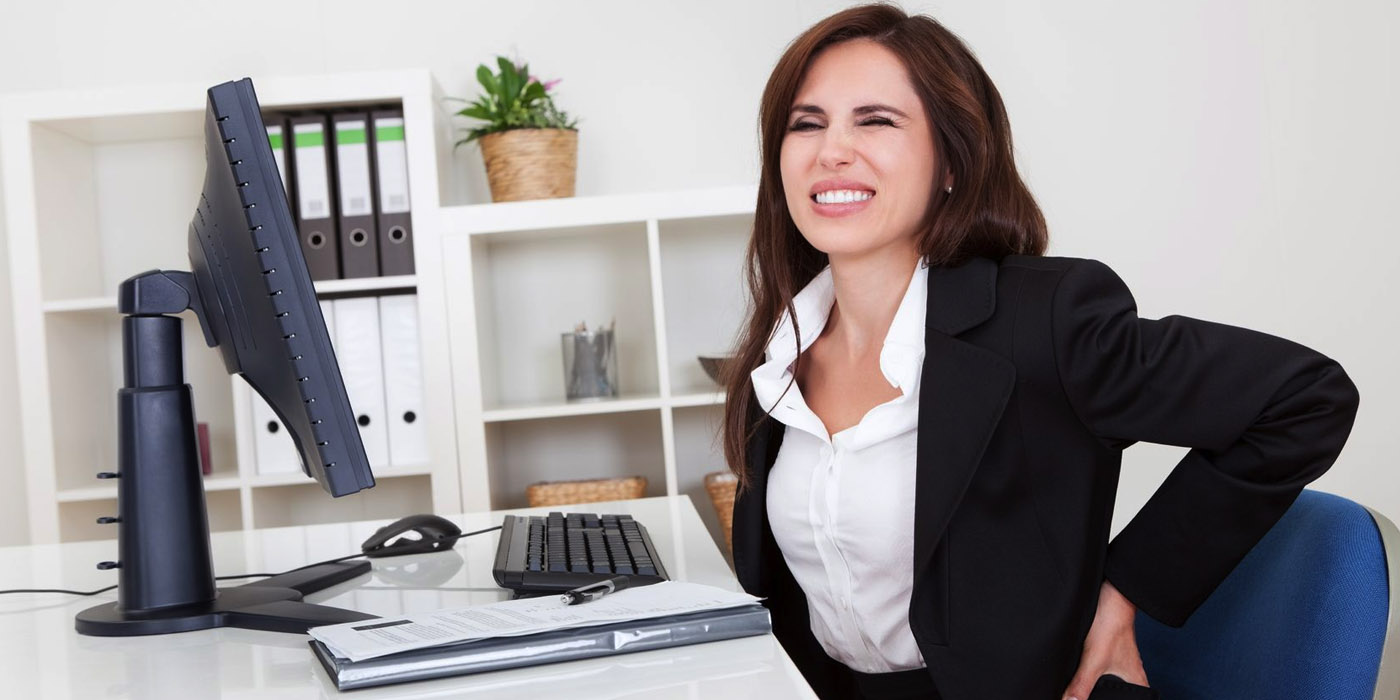
The Dangers of Sitting for Long Hours
Sitting is one of the worst positions for the body to maintain. After just 20 minutes hunched over in a chair, blood pools in the legs and immense pressure builds on the spine. Now, imagine the effects of sedentary workdays long term.
For employees at and tech companies, our jobs are desk-bound (that is, until treadmill desks are affordable in bulk). So, it’s a good thing that expert’s tips to prevent serious injury are rather simple — take frequent breaks and stand as often as possible.
Prolonged sitting causes discomfort, numbness and spine misalignment. Holding the body upright also increases tension in major muscles and joints. All that means stationary time at work can lead to cardiovascular disease (because of less blood flow), tightened hip flexors, shortened hamstrings, pinched nerves and many physical injuries in the long run.
Why Is Sitting So Unnatural?
New York City chiropractor Dr. Jan Lefkowitz treats pinched nerves, spilled discs, carpal tunnel, back pain and stiff necks full time. His chiropractic office resides in the corporate heart of Midtown NYC. The majority of his clients work 50 to 80 hours weekly.
Body pain, herniated discs, nerve problems and painful joints are direct results of long office hours, says Dr. Lefkowitz. When you’re sitting, the spine is under a lot of pressure. Our bodies were made to stand, so maintaining the seated position is physically stressful.
“The weight is distributed in a standing position,” says Kelly McGonigal, Ph. D., a health psychologist at Stanford University and a leading expert in neck and back pain.
That’s not the case with sitting. McGonigal explains, “When you sit, you distort the natural curve of the spine, which means your back muscles have to do something to hold your back in shape because you’re no longer using the natural curves of the spine to lift yourself up against gravity.”
Around 80% of Americans will experience chronic pain in their lifetime as a result, she says. Desk work is putting a huge mental and physical stress on our bodies.
Bad posture makes the sitting disease even worse. Slipped discs is a direct result.
“When the posture breaks down, it causes a lot of spinal problems,” Lefkowitz says. “If you are sitting down with bad posture and you’re slouching, you can only handle 20 minutes of that before it deforms your ligaments.”
How to Prevent Back and Neck Injuries
Good posture when sitting maintains the three natural curves of a healthy spine. The neck is forward, the upper back has an outward curve and the lower back is inward. Elbows are at the sides of the body and shoulders are relaxed — holding shoulders upright for a long time will strain the area.
“The main point is avoid slouching, you have to sit up straight and sit all the way back in your chair,” Lefkowitz says. “The chair should be tucked in close to desk. And, you need lumbar (lower back) support.”
Inexpensive remedies are available. Either roll up a thick sweater or use a small pillow behind your back to allow your lower back to curve inward. Aim to insert it in between the small of your back and the chair.
Another recommendation to avoid pulling muscles or causing pain is simply standing every 20 minutes or so. It’s the most important thing desk workers can do to give the body a break from a long held position.
“That will push the blood out of your legs and will prevent ligaments from getting strained,” Lefkowitz says. “It starts to stretch out your ligaments.”
Simple stretches at your desk such as twisting, turning the head from side-to-side and chin tucks upward towards the ceiling will also help.
“Those movements, doing them very regularly, at least once an hour, for 60 seconds will do more to relieve chronic pain than going to a yoga class once a week,” McGonigal says.
General Tips
- Stand at least every hour at your desk.
- Do simple stretches throughout the day such as placing your hands on your lower back and stretching backwards.
- Get moving! Make conference calls on your feet or suggest a moving meeting — walk up and down the hall.
- When seated, make sure you maintain good posture with your butt all the way back to the chair, feet flat on the floor, head straight and with lower back naturally arched inward.


